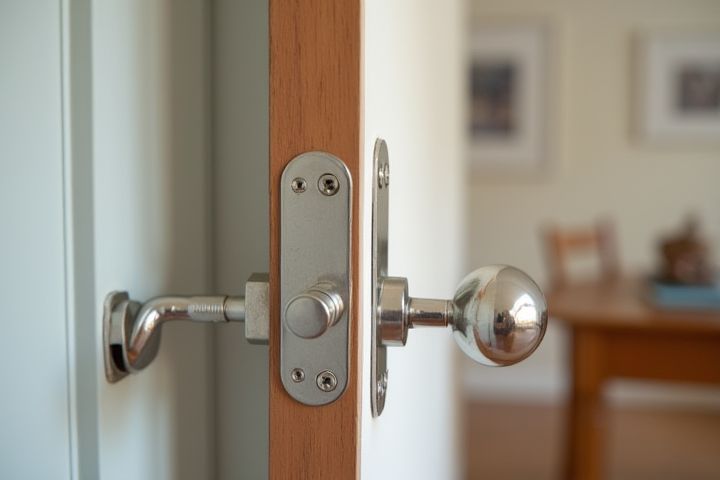
To childproof your house, start by securing heavy furniture to the walls to prevent tipping accidents. Install outlet covers and safety gates to restrict access to stairs and hazardous areas. Ensure that medications, cleaning products, and sharp objects are kept out of reach or locked away in cabinets. Use corner protectors on furniture edges and safety latches on drawers to minimize risks. Regularly inspect your home for potential hazards, such as loose cords or small objects, to create a safer environment for your child.
How To Childproof A House
Secure heavy furniture to walls.
Secure heavy furniture, such as bookcases and dressers, to walls using anti-tip brackets or straps to prevent toppling during earthquakes or rambunctious play. This essential safety measure can significantly reduce the risk of injury, as according to the U.S. Consumer Product Safety Commission, furniture tip-over accidents result in over 11,000 injuries annually among children. Ensure that you choose high-quality anchors and install them according to the manufacturer's instructions for maximum effectiveness. Regularly check the stability of secured items, especially after shifting furniture around or making changes to your living space.
Cover electrical outlets.
Covering electrical outlets is a crucial step in childproofing your home, as approximately 2,400 children aged 0 to 6 are treated annually for electrical injuries. Installing outlet covers or safety caps can significantly reduce the risk of accidental shocks. Choose tamper-resistant outlets, which have built-in shutters that prevent foreign objects from being inserted, offering a more permanent solution. Ensure that all unused outlets are secured and remind caregivers to supervise children when they are in areas with exposed outlets.
Install safety gates at stairs.
Installing safety gates at stairs is crucial for childproofing your home, as falls account for a significant number of injuries among young children. Choose gates that meet safety standards, ensuring they are at least 30 inches high and equipped with a secure locking mechanism. Properly mount gates at both the top and bottom of staircases to prevent accidents; ideally, they should be positioned where children cannot reach or climb over them. Regularly inspect the gates for wear and ensure they remain securely fastened, providing peace of mind for your family's safety.
Lock cabinets with hazardous items.
To childproof your house effectively, start by locking cabinets that contain hazardous items such as cleaning supplies, medications, and sharp objects. Use childproof locks or latches that are difficult for children to manipulate, ensuring that all accessible cabinets are secured. Regularly check storage areas to confirm that dangerous substances are out of reach and stored properly. Educating older children about the importance of safety around these areas can also help maintain a secure environment.
Use corner protectors on sharp edges.
Install corner protectors on sharp edges of furniture, countertops, and cabinets to enhance safety in your home. These soft padding solutions significantly reduce the risk of injury by providing a cushioned barrier against potential bumps or falls. For optimal protection, choose corner protectors that meet safety standards and are made from non-toxic materials. Ensure to secure them properly, covering all sharp corners throughout your living spaces, particularly in areas where children play or explore.
Keep small objects out of reach.
To effectively childproof your house, prioritize keeping small objects out of reach, as these can pose choking hazards. Store items like coins, batteries, buttons, and small toys in secure places, elevating them at least three feet off the ground and in cabinets with childproof locks. You can also rearrange furniture or use decorative baskets for temporary storage to limit access to these items. Regularly inspect your living spaces for any overlooked objects that might be harmful, ensuring a safe environment for your child.
Adjust blind cords to prevent strangulation.
Adjusting blind cords is essential for childproofing your home and preventing strangulation hazards. Consider using cord cleats or cord wind-ups to secure excess cord away from children's reach, ensuring that the cords are out of sight and inaccessible. Opt for cordless blinds or those with inner cords to eliminate potential dangers entirely, providing a safer environment for your little ones. Regularly inspect your window coverings to ensure they remain secure and free of any dangling cords as part of your ongoing safety measures.
Lock toilets and keep bathroom doors closed.
Locking toilets, which can prevent accidents and misuse, is an essential step in childproofing your home. You can install childproof toilet locks that restrict access while still allowing adults to use the facilities conveniently. Additionally, keeping bathroom doors closed or installing self-closing hinges can help minimize unsupervised access, ensuring your child remains safe from potential hazards like slippery floors or chemicals. Consider implementing these measures to maintain a secure environment for your little ones.
Install window guards or safety nets.
Installing window guards or safety nets is essential for childproofing your home, especially in areas with easy access to windows. These protective barriers prevent children from accidentally falling out while still allowing fresh air and ventilation. When selecting window guards, ensure they meet safety standards and can be easily opened by adults in case of emergencies. Consider safety nets for larger openings, providing a secure environment while keeping your little ones safe from potential hazards.
Secure doors and windows with childproof locks.
Secure doors and windows with childproof locks to ensure your child's safety throughout the house. Install locks that require a key or a combination, which are typically designed to withstand curious little hands. Check that all ground-level windows are equipped with sturdy screens or additional locks, making it difficult for young children to open them independently. Consider implementing sliding bolt locks on high windows, providing enhanced protection while allowing natural light and ventilation.
